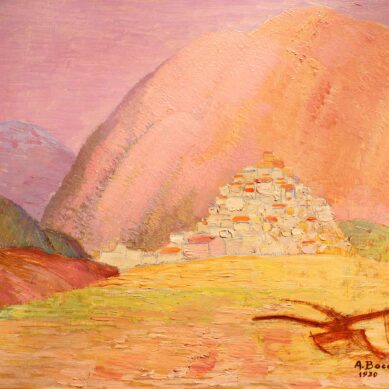You searched
Painter
Amedeo Bocchi
Are you interested in the sales or the purchase of his artworks?
We buy works of this artist
and of other painters and sculptors from the 16th century to the first half of the 20th century
The Berardi gallery offers a free and without obligation service for evaluation of ancient and modern art . To find your way in the art market, very complex and full of nuances, it is better to rely on a professional consultant who can answer fast and concretely to your needs. The clarity of the answers will resolve effectively the need to estimate or sell an asset.
Contact us immediately without commitment
Answers also in 24 hours:
Amedeo Bocchi
Amedeo Bocchi
Amedeo Bocchi was born in Parma in 1883 and took his first steps towards drawing under the guidance of his painter father. His father noticed the boy’s artistic talents and enrolled him at the Academy of Fine Arts in Parma, where he was taught by Cecrope Barilli and where he formed a strong and lasting friendship with Renato Brozzi. He moved to Rome in 1902 and completed his training by attending the Scuola Libera del Nudo.
The move to Rome: the first interest in the social question
But the real creation of an artistic conscience for Amedeo Bocchi came about through contact with painters such as Giulio Aristide Sartorio and Antonio Mancini. The definitive move to Rome took place in 1915, but the artist remained very attached to his home town. His closeness to Symbolist painters such as Sartorio did not prevent him from embarking on a completely different theme, that of the social question.
He was interested in the last people and the workers, and immediately began to outline his characteristic style: a strong attention to light and its variations, in an essentially two-dimensional space that was immediately denoted by symbolic suggestions.
These early years also include decorations of palaces, especially in the Emilia and Veneto areas, in which all the influence of the Secession on Amedeo Bocchi is revealed. In 1910, together with the symbolist decorator Achille Casanova, he frescoed parts of the Basilica of Sant’Antonio in Padua.
Art Nouveau and Secessionist influences and the study of light
This commission enriched him with Pre-Raphaelite and Art Nouveau influences, which he would then put into practice again in the decoration of the Golden Room of Torrechiara Castle, carried out with de Strobel and Brozzi. 1915 is a very important year for Bocchi: he moves to one of the studios of Villa Strohl-Fern, together with his friend Brozzi, and decorates the Board Room of the Cassa di Risparmio di Parma, with a series of allegories with strong Art Nouveau echoes.
Wealth, Savings and Protection fill the walls of the room, with references to the expressions of the Viennese Secession, in particular those of Klimt, who returns in the decorative use of the gold background, in the curved lines, in the flat and symbolic representation of the scenes, all characterised by a strong outline. Flowers and stylised ears of corn intersperse the narrative, accompanied by swarms of black bees standing out against a honeycomb background.
At the same time, Bocchi began to frequent the Pontine Marshes and Terracina, drawing inspiration from his work in the fields and producing particular portraits and intimate, deeply lyrical landscapes that began to appear in exhibitions in the 1910s, including Sunset in the Roman Countryside and Huts in the Pontine Marshes. In 1916 he painted the symbolic triptych The Three Sisters: the Cultured, the Mad, the Wise, which reveals his contact with the Secessionist and Art Nouveau artists who frequented Villa Strohl-Fern, including Adolfo De Carolis.
In 1921 he took part in an important group exhibition at the Galleria Pesaro in Milan, presenting, among other works, Olive Trees, Terracina, First Sun, In the Park, Villa Strohl-Fern, Portrait of Mrs Clori Berenini, Winter Sun, Fishermen in the Pontine Marshes and On the Cathedral Steps.
Many portraits appear in Amedeo Bocchi’s production, all characterised by an intense psychological notation and a halo of pleasant mystery, which contributes to placing his figure in the middle of the Roman Symbolist season. The actress Hélène De Wnorowska and Portrait of a Young Girl were exhibited at the 1930 Biennale, while Portrait of the sister and Portrait of the daughter appeared at the 1931 Quadriennale in Rome. Roman landscapes and portraits fill the production of his last years, always rich in chromatic suggestions and clear plays of light. He died in Rome in 1976.
Elena Lago









